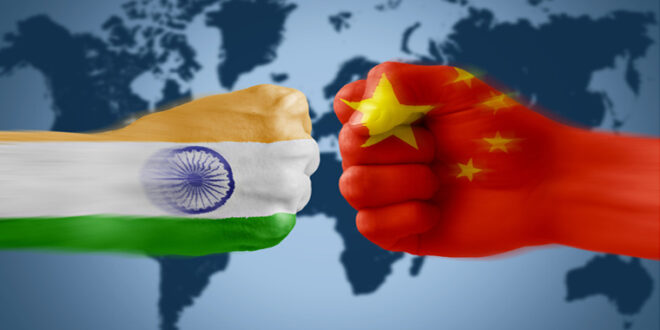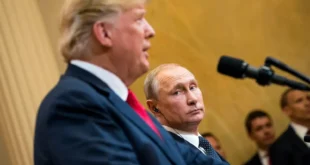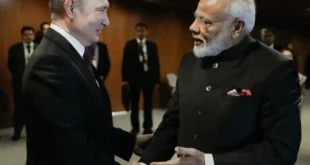Giancarlo Elia Valori
On June 15, 2020 the People’s Liberation Army (PLA) shot some Indian soldiers dead – approximately 20 – in Galwan, a valley and a river of the Ladakh region.
The territorial issue in that region is still very difficult to settle: the 1993 Line of Actual Control (LAC) has included 60 square kilometres of ancient Indian territory into the China-controlled area. The control of the DSDBO – Darbuk, Shyak, Daulat Beg and Oldi, the 225 kilometre road that connects the Ladakh region and the Galwan Valley with the outside world – is still to be defined.
For India, in the north of Ladakh, there is also the possibility of a simultaneous war on two fronts, with Pakistan in the Siachen glacier and with China in the rest of the North.
China has also shown it is not interested in five different peace agreements – in 1993, 1996, 2005, 2012 and 2013 – defined as early as the 1962 war between India and China.
The “forgotten conflict” that John Fitzgerald Kennedy did not use in the global confrontation with Communism, later choosing – and ill became of it – the confrontation with the Vietminh in South Vietnam.
In 1993 China asked India to stop the extension of the DSDBO and also the return of the Indian troops into the northern area of Ladakh. India, however, is blocked by considerable internal terrorism and by the strong tensions in Jammu-e-Kashmir, as well as by the traditional policy of opposition to Pakistan and finally, by the new maritime trends in the South and the ever more difficult coexistence between Hindus and Islamists.
Certainly, the People’s Liberation Army (PLA) can fight three modern wars simultaneously: the cyber-warfare, the space and finally the electromagnetic wars.
In conventional terms, China can currently fight a limited regional war and a larger global war, again simultaneously.
Hence what does China really want from India? Firstly, hands free on a border, like Ladakh’s, which is vital to the already started New Silk Road.
Many Indian leaders have long been asking China to make the BRI corridor cross Kunming in Southwest China up to the port of Kolkata, where it could reconnect to the maritime “Silk Road” through the Bay of Bengal.
Or China and its Silk Road could enter Uttakharand, via Kailash Manasarovar in Tibet to later reach the port of Mumbai. This is one of the real issues of contention.
Hence China, with its BRI, should not cross the valleys of Kashmir, but the Indian areas.
India has also quickly pulled out of the Regional Comprehensive Economic Partnership (RCEP), the large free trade area established in 2012. An implicit favour to China.
Hence what does China really want? Firstly, to use the Ladakh region and Kashmir as bases and criteria to control Tibet.
The area below, where the Indian army is stationed, south of the Brahmaputra river, is still an easy target for the Chinese missile launches.
If we consider the Chinese troops in Ladakh and those already present in the Tibetan autonomous region, currently the People’s Liberation Army is actually master of the scene.
However, if the Indian President, Narendra Modi, shows clear signs of India’s realignment on the U.S. strategy in the region, its strategic closure to the North will become inextricable. And very dangerous, not for a war, but for the strategic and geo-economic effects of the closure in the North.
The Indian troops on the Ladakh border, however, are not a target for China.
Apart from the Galwan Valley, China is ready to negotiate hard on everything else.
This means that China wants full security of the lines around the Tibetan Autonomous Territory and the discontinuity-control of the Pakistani forces on the Indian-Chinese border, as well as the maximum mobility of its forces, and finally the guarantee that there will be no military dangers hosted on the Indian territory.
Jihadist dangers or not. Therefore, China does not need to wage war on India insofar as it can force the Indian government to do what China wants.
China also wants to reaffirm mutual neutrality between China and India, while it thinks that Narendra Modi has above all nationalistic aims in the Himalayan region and in the arc of the Three Borders.
Moreover, China did not like the strengthening of relations between India and Australia, as well as the Indian repeal of Article 370 of the Jammu-e-Kashmir Statute, i.e. the “special administrative status” of the Indian State with a Muslim majority.
This has led to the creation of the Union Territory of Ladakh in the Indian legal system. Currently some Chinese maps already draw the territory of Aksai Chin – where China, India and Pakistan meet – with borders that, according to China, show that India is expanding illegally.
In essence, Modi’s India has chosen on which side to stand in the next and in any case – already started “cold war”. The U.S. side and the side of strategic contrast with China.
The Sino-Indian territorial tension currently stretches from Lake Pangong and the Galwan River valley, as well as from the Gogra region, to Naku La in Sikkim.
Neither side, however, recognizes the extent of their respective claims in the LAC area and around Lake Pangong.
The Chinese soldiers in the region come from the 362nd Border Regiment and are quartered in Fort Khurnak, north of Lake Pangong and Lake Spanggur.
Moreover, there is a Chinese base in Gongra and a squadron of boats on Lake Pagong.
Approximately 600+1500 units. To the northwest, there are other Chinese troops from the 6th Mechanized Division.
The base is in the Taklamakan Desert, but they are mainly reserves from Xinjiang.
An important Chinese strategic goal is to avoid porosity of a border that directly affects Xinjiang.
Therefore, for the Indian Leader, Narendra Modi, there are two choices to make, an economic and a strategic one: to launch India as a global competitor of China, by absorbing the many future “third” processing activities – hence an active control of borders and a regional war even with China becomes rational – or India could join China via the “New Silk Road” and the Sino-centred globalization.
It is a choice still in fieri, despite the old talk about Chindia a few years ago.
In terms of economic and trade wars, the issue becomes even more complex.
In the first quarter of 2020 the People’s Republic of China recorded a GDP of 20.65 trillion yuan, equivalent to 2.91 trillion U.S. dollars.
A 6.9% reduction compared to the GDP of the previous year. A significant reduction, but certainly lower than in many Western countries.
China’s imports fell by 8.5%. A situation that does not enable anyone to start a war, not even a regional or local war.
In the first half of 2019 alone, China’s tariff war with the United States cost as much as 35 billion to China.
For China, fighting with India would mean losing 74.72 billion dollars from the rich and wide Indian market.
Pakistan, a sure ally of China, is in the midst of an economic crisis and cannot afford a war. Therefore, only the tiny Nepal remains, on which you cannot certainly rely for a “long lasting war”.
On a strictly military level, China is far more efficient than India.
104 Chinese missiles could hit every part of the Indian territory.
12 DF-21s missiles are targeting New Delhi directly. The DF-31s missiles are deployed in Beidao, Gansu Province. Some DF 21 and 31 missiles are deployed in Xining, while other DF-21 ones are deployed in Korla, Xinjiang and others in Yunnan.
For India, ten “Agni” missiles can reach the entire Chinese territory.
Eight additional Agni II missiles can reach the centre of China. But there are 51 aircrafts – the real key to India’s nuclear defence – that can fly over targets in Chinese territory.
But, above all, Tibetan and Xinjiang targets.
Only the Indian missions in Tibet could exploit a strategic surprise effect. In other regions the Mirage 2000, Jaguar IS and F-35s missiles would not be particularly successful, considering the level of Chinese anti-aircraft fire.
Currently the Indian forces available for a clash with China in the North are approximately 225,000.
This also includes the T-72 tank base in Ladakh and a series of Bramhos cruise missiles, stationed in Arunachal Pradesh.
The three Indian Armed Forces commands that oppose the respective three Chinese commands have 270 aircrafts and other equipment at their disposal.
China also have high altitude air bases in Tibet, Xinjiang and the Northern Ladakh region.
This means that the Chinese aircrafts have to leave with only part of their cargo.
Hence the Chinese decision-makers immediately think of a missile attack on Indian positions, without an initial air “passage”.
Obviously it must also be noted that India is strongly opposed to the China-Pakistan Economic Corridor, which crosses Kashmir and the Gilgit-Baltistan area, a project that India has tried to stop with the U.S. help.
On the other side, India has built a lot of infrastructure in its part of Kashmir.
As already noted, there was the economic closure of India, a real gift for China.
Meanwhile, India has asked Russia to quickly send the S-400 and Sukhoi SU 30 MKI missiles quickly, but Russia has no interest in mediating between China and India.
In the background there is also a hardening of bilateral relations between Russia and China, which could leave room for manoeuvre to Russia, not for mediation between the two countries, but for rebuilding the old link between the USSR and India, which was also one of the reasons for tension between Maoist China and Soviet Russia.
GIANCARLO ELIA VALORI
Honorable de l’Académie des Sciences de l’Institut de France
President of International World Group
 Geostrategic Media Political Commentary, Analysis, Security, Defense
Geostrategic Media Political Commentary, Analysis, Security, Defense





